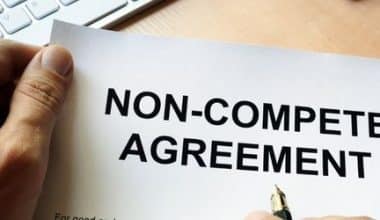Business-to-business sales can be very challenging, especially if you are a newbie. However, with the right knowledge and experience, you can bring in a steady income over time and make more money than at your average 9-to-5 job. In this article, we’ll discuss what business-to-business sales are, their examples throughout history, and tips for starting your own B2B sales company or getting hired as an employee!
What are business-to-Business Sales?
B2B sales is the process by which a business sells goods or services to other businesses. In B2B sales, the company selling the product has no control over what it will be used for or how it will be implemented. This means that when selling to another business, there are no guarantees about how much money your client will make from using your product.
The market itself divides into segments based on the specific needs of customers to attract them more effectively; each segment has its own audience that requires different types of products or services from its competitors.
The role of sales representatives depends on where they fall within those segments. Some may only work with big companies, while others only work with small ones. Some may focus on joint ventures, while others only work with clients who share their interests. It all depends on where a person is in the structure of this industry.
B2B Sales Features
Business-to-business sales frequently involve far more expensive products and services than business-to-consumer sales and are typically completed after a lengthy and complex sales cycle. Business-to-business selling has distinct characteristics, regardless of whether a company sells accounting software or heavy construction equipment.
Larger Average Transactions
Business-to-business sales can typically reach thousands, if not millions, of dollars. Larger quantities and higher-priced products raise the bill, but businesses are willing to pay the price for the resources they require.
Professional Decisionmaking
Because the products and services a company acquires to have a significant impact on its operations, procurement will be meticulous. Large corporations hire professional procurers who are in charge of the entire sales cycle. Because business-to-business buyers are experts, business-to-business sales professionals must also become experts in order to respond to arguments and objections.
Increased Participation of Stakeholders
Business-to-business sales are rarely handled by a single person. Instead, several stakeholders are involved in the process in some capacity. Some will have sway, while others will have the final say and sign the contract. This means that sales representatives must use a variety of arguments to persuade people in various positions.
Longer Sales Cycles
Business-to-business sales are typically lengthy. A typical cycle can last several months with more stakeholders involved and strict business rules in place, including numerous rounds of phone calls and meetings.
Fewer Customers
Because business-to-business sales cycles are longer and more complicated, the cost of acquiring a business-to-business customer is higher than in business-to-consumer sales. When compared to the business-to-consumer segment, the total addressable market in business-to-business sales is much narrower, with fewer potential customers interested in purchasing a specific product. On the plus side, B2B customers typically have a much higher lifetime value.
The Business-to-Business Sales Process
The process of selling to businesses differs from that of traditional consumer sales. To better understand the process, we’ll listen in on a sales call with Hank, who sells business phone systems. The steps in a business-to-business (B2B) selling process are as follows:
Recognize the Need and Ability to Pay
The first step is to comprehend the issue that your prospective customer is attempting to solve, as well as their ability to pay for your product or service. Hank begins the conversation by inquiring about the prospect’s reasons for purchasing a phone system (New facility? Replace the old system? Add stations to the existing system?) and what they currently have. He discusses the features of the current system that are used, as well as any features that are not available that they wish they had. He also inquires about their implementation budget so that he can propose a solution that the company can afford.
Create a Solution
Once you have an understanding of the prospect’s needs and financial means, you must evaluate the various products you have to offer and develop a customized solution for them that meets both their needs and budget. Hank now compares the information from the initial meeting to the various systems he has available and chooses the one he believes will best meet their needs. He then creates an information package and quotes for this system, as well as a customized checklist that compares the customer’s “wish list” to the proposed hardware.
Solution evaluation with the customer
The customized solution is now shared with the prospective customer, usually in the form of a sit-down meeting in which the solution is presented and all customer questions are answered. Prior to finalization, the solution may be modified based on customer feedback. Hank returns to the customer and walks them through the proposal he’s created. Hank returns to his office after a lengthy discussion to revise the proposal to reflect a few changes made during the meeting.
Complete the Sale
Once the terms have been agreed upon, a purchase agreement, or contract, is signed to seal the deal. Hank sends the client the final proposal, along with a contract that they can sign and return to start the process. The sale is complete once the signed document is received, and the implementation process begins.
Are business-to-business sales difficult?
The answer to this depends on a couple of factors. Some products or services are more challenging to sell than others.
Some businesses have a lot of technical requirements and require a lot of research before they can be sold.
For example, an artisanal product like handcrafted furniture may have many aspects that need to be considered when selling it online or through catalogs. This can make business-to-business sales challenging because you have to know all of these details about your potential client’s needs before presenting them with an offer for their product/service (and then convincing them that this is what they need).
Business-to-Business Sales Examples
A B2B salesperson is a person who sells products or services to other businesses. These salespeople are often hired by the company that provides their services, but they can also work for companies that market their products and services.
For example, if you’re a software developer and you want to sell your software on Amazon, then you’d be considered an independent contractor rather than an employee. However, if you work for a company called “Company X,” and Company X has agreed to pay all of your expenses while working on this project (like travel costs), then this is still considered B2B business because it’s between two separate entities.
Business to Business Sales Leads
Leads for business-to-business sales come from direct mail campaigns, online ads, and other ways of getting in touch. B2B buyers can be difficult to reach because they tend to use premium rates for advertising and don’t respond to mass emails. To qualify as a business leader, you’ll need to:
- Know what your target audience is looking for
- Have a clear understanding of their buying process
- Be able to show that your product or service meets those needs
How are B2B sales done?
The first step in selling your product or service is to understand your customer. You need to know what they want and how you can help them achieve it. If a customer doesn’t know what they want, how will you convince them?
You need to understand their needs, which are usually based on a problem or need that has been identified by the customer (e.g., “I don’t have enough time for my family”). This means that when trying to sell someone something, it’s important for you as the salesperson (and all other members of your team) not only to sell just one solution but rather offer multiple solutions from different angles until one works best for each client’s situation, whether this means offering everything under the sun at once or focusing on just one thing first before moving onto others later down the line.
Finally, understanding who buys from whom may seem like an obvious thing at first glance due to its relevance across industries ranging from retail stores all the way up to large corporations whose products range widely too.
How do you make a business-to-business sale?
Several factors influence the B2B sales approach, including seller competency, sales process effectiveness, product fit, available alternatives, and the buyer’s purchasing capability and willingness to adopt.
Businesses must do the following to ensure that all of these moving parts function properly:
- Create an effective B2B sales strategy.
- Determine the most effective B2B sales techniques for their teams and target customers.
- Make sure their sales reps are following well-calibrated playbooks and sequences.
- Performance should be measured and improved.
B2B Sales Challenges
B2B companies face a number of common challenges. The following are the most pressing issues in B2B sales:
- Misalignment of sales and marketing
- Competition for a small number of prospective customers
- Adoption of technology is being resisted.
- Sales mindset/culture that is entrenched but out of date
- Deficits in seller skills/training
Tips for B2B Sales
Here are some pointers to help you improve your B2B sales performance:
- Make customer communications more personalized. Use technology to assist you in personalizing at scale.
- Never skimp on ongoing seller education. B2B buyers are astute; they prefer to work with professionals who exhibit expertise and empathy.
- Create genuine rapport by actively listening, thinking critically, and asking probing questions. Opt for multi-channel outreach (mobile, social media, email, events, sales calls, etc.,)
- Consider forming a dedicated sales operations and sales enablement team.
- Extend your reach beyond CRM and marketing automation. Accept new technologies like sales engagement platforms. Use data to make better decisions and playbooks.
- Positive customer feedback should be encouraged, monitored, and displayed. Include case studies and customer success stories in your sales playbook.
- Ensure that all customer-facing units, from marketing and sales to customer success, are fully strategic and tactically aligned.
What is the difference between B2B and B2C?
Business-to-business and business-to-consumer sales are perceived as diametrically opposed. It’s one thing to sell caffè latte to sleepy commuters and quite another to sell espresso machines to trendy coffee shops. Different targets, different goals, and different selling strategies.
The scope, complexity, scale, and cost of each transaction model differ. Business-to-business transactions are high in both price and volume, and they include companies from every industry, including wholesalers, construction firms, real estate, and transportation. Some may argue that business-to-business transactions are the backbone of the economy. Business-to-consumer, on the other hand, is far more visible and involves everyone.
The B2B purchasing process is also distinct. Business-to-business customers make purchasing decisions based on rational and strategic considerations with the goal of creating value, whereas business-to-consumer buyers are motivated by personal desires and value systems. This distinction alone distinguishes messaging, marketing, and sales cycles.
However, the distinction between business-to-business and business-to-consumer selling is becoming increasingly hazy. The way customers buy has changed dramatically in the internet era, including in the business-to-business space. As a B2B sales expert, you want to establish relationships with prospective companies and their numerous stakeholders. With buyers conducting online research, you must take a consultative approach to business-to-business selling.
Business-to-Business Sales Salary
A B2B salesperson’s salary is generally between $50,000 and $80,000 per year. The average annual salary for a B2B sales manager is typically between $90,000 and $120,000. And the average annual salary for a director of business-to-business sales or an executive director of marketing & communications is around $105K+.
What is the future of business-to-business sales?
B2B sales is undergoing rapid transformation. The distinction between inside and outside sales is blurring, while best practices for consumer sales, particularly personalization, are becoming more common in B2B.
Sales tools that were introduced only a few years ago (such as revenue intelligence platforms) have already become essential for survival. As AI and machine learning enable teams to scale both customer engagement and revenue, technology and buyer-centricity are reshaping the ecosystem.
Summary
Now you are ready to start your career in B2B sales. You don’t have to be afraid of it anymore! We hope this article will help you on your journey as a B2B Sales Person, and we wish you success in this exciting field.






